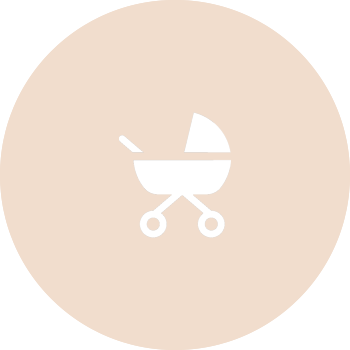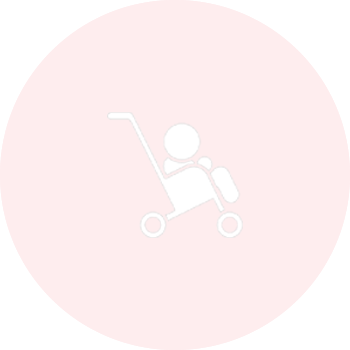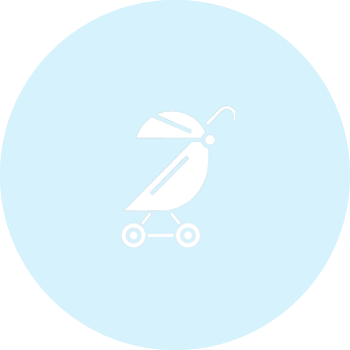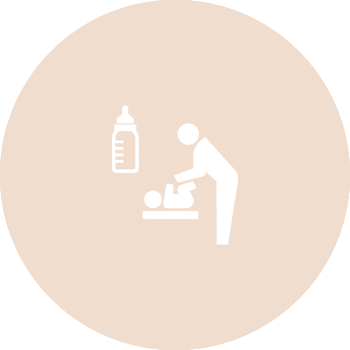Here at For Your Little One, we aim to provide all the information you need to solve those puzzling parenting problems.
We understand that no two parents will have the exact same experience. From day one of pregnancy, some may find it a walk in the park, while others face more challenges. The same applies to feeding! Whether you’ve chosen to breastfeed, chest feed, or bottle-feed, mastering the process takes time, practice, and a few handy tips.
That's why we've decided to share expert tips and advice from generations of experienced parents on how to master the art of breastfeeding.
The Basics of Breastfeeding
Whether you're just starting to think about breastfeeding or you've already given it a try and need more guidance, understanding the fundamentals is a great place to start. Breastfeeding, also known as chest feeding, is a natural process but doesn’t always come naturally. Deciding whether to breastfeed is a personal choice and should fit in with your life and body.
If you do decide to breastfeed, there are numerous benefits for you, your baby, and even the planet.
For Parents:
- Breastfeeding helps the uterus contract to its pre-pregnancy size after birth.
-
It can reduce the risk of breast cancer, ovarian cancer, and diabetes.
For Babies:
- Breastmilk contains the best nutrients and antibodies, protecting your baby from infections.
- The fats and enzymes in breastmilk improve digestion and help prevent diaper rash.
- Studies show that breastfed babies tend to have fewer food allergies and may even have higher IQs.
For the Planet:
- Breastfeeding reduces the use of plastic and energy since there’s less formula to manufacture and package, making it an environmentally friendly choice.

Getting Started with Breastfeeding
The key to beginning your breastfeeding journey is mastering the first latch. A latch refers to how well your baby fastens to the breast when feeding. A good latch promotes a high milk flow and minimizes nipple discomfort, whereas a poor latch can lead to sore or cracked nipples and inadequate nutrient transfer to your baby.
Tips for Latching:
- Find a Comfortable Spot: Ensure both you and your baby are comfortable. Many people are encouraged to try breastfeeding right after birth when the body releases colostrum, a nutrient-rich, milk-like fluid. If you're in the hospital, you can also get expert help and guidance from your midwife.
- Positioning: Once you’re comfortably positioned, align your baby’s nose with your nipple to encourage them to open their mouth and tilt their head back.
-
Latch Technique: Point your nipple towards the roof of their mouth while ensuring their nose is clear of your breast so they can breathe. While you should feel some pressure when they start to suckle, it shouldn’t be painful. If you experience pain, try repositioning and latching again.
Positioning:
If you haven’t found a comfortable position yet, consider investing in a good nursing pillow for support. Since our bodies and breast sizes vary, different positions may work better for different people. Here are some expert-recommended positions:
- Cradle Hold: This common position involves holding your baby’s head in your forearm while supporting their body across your torso.
- Sitting Up: Sitting upright allows you to hold your baby parallel to your body or in a baby carrier.
-
Underarm Hold: Also known as the football hold, this position involves resting your baby along your forearm with their body tucked alongside your side or ribs, and their feet pointing towards the back of the chair or whatever you’re sitting on.

Experimenting with these positions can help you find the most comfortable and effective way to breastfeed.
Side-Lying Position
Perfect for night feeds, this position allows you to lie down parallel to your baby. Their head should be level with the nipple closest to the bed, while your arms are free to help them latch on.
Laid-Back Position
If you’re recovering from a C-section, lying down with your baby on your chest can be the most comfortable way to feed. Place them on your shoulder and arm with their head level with your nipple. This position alleviates pressure on your tummy, though you may need a helping hand.
Solving Common Breastfeeding Problems
Every breastfeeding parent may encounter a few hiccups along the way. Here are some potential obstacles and how to address them:
Painful Latching:
While some pressure is normal, you should not feel continued pain throughout feeding. If pain lasts more than a minute, it’s likely your baby hasn’t latched correctly. Gently remove your baby from the breast and try again.
Mastitis:
Painful breasts can be a sign of mastitis, a bacterial infection in the breast that causes tenderness, swelling, and flu-like symptoms including fever. To treat mastitis, you may need antibiotics from your doctor or pain relief while it clears up on its own. It is safe to breastfeed with mastitis; in fact, health specialists recommend it to help clear the infection.
Sore, Cracked Nipples:
Cracked and sore nipples are common, especially in the early stages of breastfeeding. This is often due to an incorrect latch, frequent feeding, or yeast or skin infections. Fortunately, your breast milk can help heal cracked nipples. Simply express a few drops onto the nipple and allow it to absorb after feeds.
By understanding these common issues and their solutions, you can navigate the challenges of breastfeeding with greater ease.
Thrush
Your little one can develop thrush in their mouth due to the moist, warm environment of breastfeeding. If this occurs, speak to your GP for antifungal medication to treat both the baby's mouth and your nipples.
Blocked Ducts
When the breast is not fully emptied of milk, the ducts can become blocked. In the first few weeks, it can be difficult to completely empty your milk supply since you might overproduce. To prevent blockages, keep a warm heat pack nearby and massage your breasts during feeding to ensure all the milk is expressed.
Sleeping
Newborns love to sleep, and sometimes this can happen during a feed. If your baby falls asleep early into the feed, try tickling their feet or gently stroking their face to stimulate them to continue suckling. This issue usually resolves as they get older.
Tenderness:
Initially, you may experience some tenderness in your breasts due to the accumulation of breastmilk. Rest assured, this discomfort typically subsides within a few weeks, as your body begins to regulate its milk supply around the 8-week mark. During this adjustment period, it's advisable to avoid tight-fitting bras to accommodate any fluctuations in breast size.
Breast size:
Breasts vary widely in shape and size, yet all are equally capable of breastfeeding. Contrary to popular belief, there's no direct correlation between breast size and milk production. While the size of your breasts isn't a concern, their individual shape and size may influence breastfeeding techniques. For individuals with fuller busts or nipples that are lower or less prominent, a nursing bra can provide support and assist with proper latching.
Conversely, individuals with smaller breasts may find that they have less storage capacity for milk compared to those with larger breasts. Think of smaller breasts as smaller containers, which means they may require more frequent breastfeeding sessions, particularly as your child grows.
Ensuring Adequate Milk Supply:
A common concern for many breastfeeding parents is whether their baby is receiving enough milk. This worry is particularly prevalent among those exclusively breastfeeding. However, there are several reassuring signs that indicate your baby is content and thriving with their milk intake.
Your baby demonstrates a pattern of rapid suckling followed by longer, stronger sucks during feeding sessions.
- Their cheeks remain round and full, indicating effective milk transfer, accompanied by audible swallowing sounds.
- Throughout the feed, your baby appears content and calm, and they naturally detach from the breast when satisfied.
- Your baby maintains a healthy weight, and healthcare professionals such as midwives or health visitors do not express concerns about their weight gain or loss.
- By the end of the first week, your baby should have at least six wet diapers daily, and their stool should transition from black and tarry to a more typical consistency.

